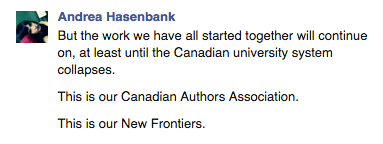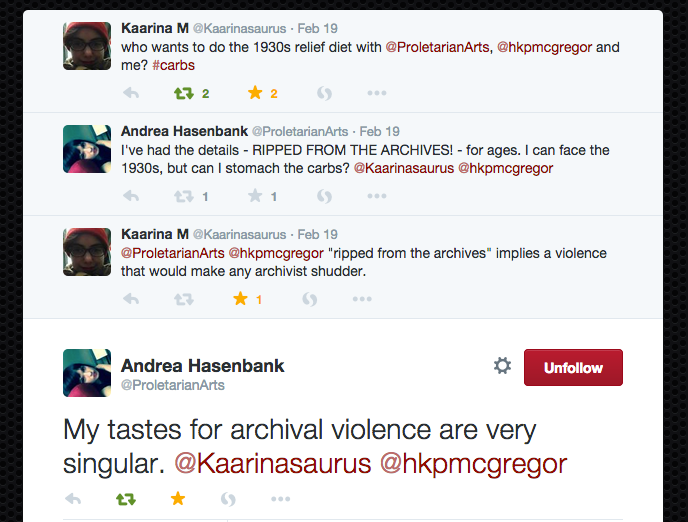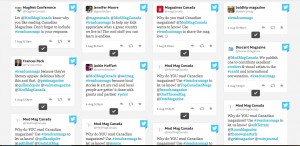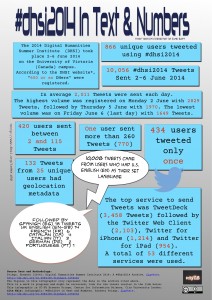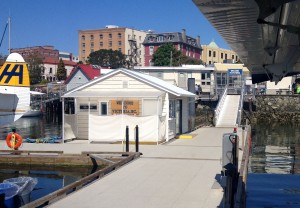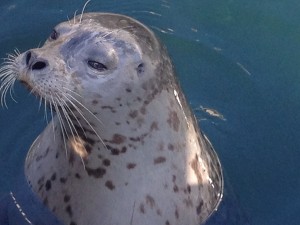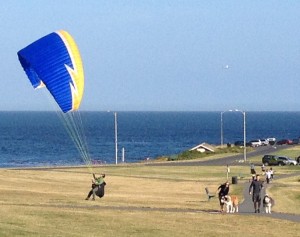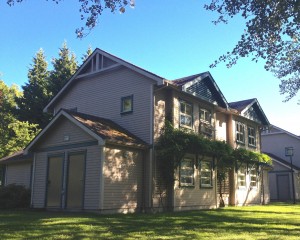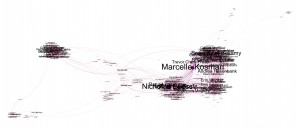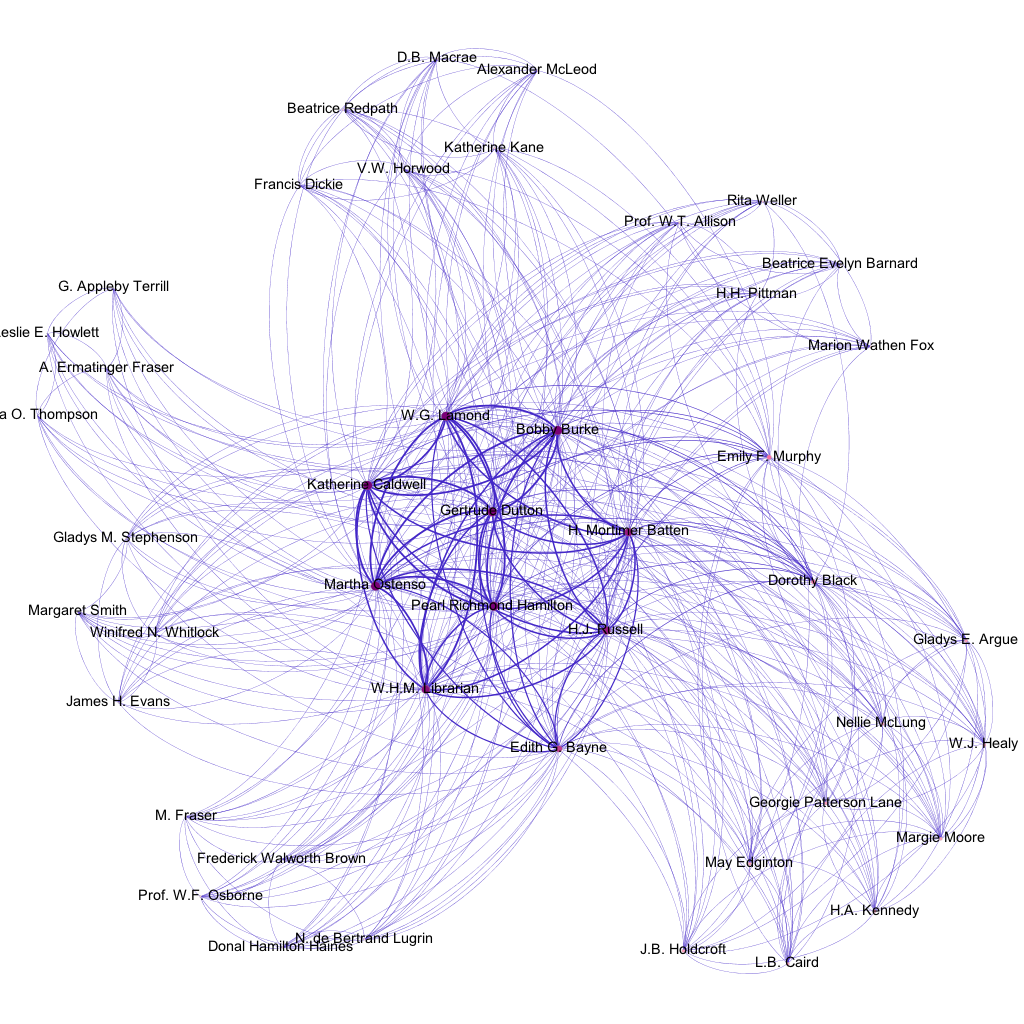Archives
Author Archive
March 31, 2015
Community and Precarity
“Also, happy last day of EMiC.”
This message just appeared on a Facebook chat I’m having with three other EMiCites, as we discuss exactly how much social time we can fit into the upcoming Digital Diversity conference in Edmonton. Many of us are not attending DHSI this year — our normal summer meet-up spot — and so we’re treating DigDiv as a mini reunion.
It’s not really the last day of EMiC. A simple fiscal end-date will not spell the end of the projects and collaborations we began over the past seven years, many of which will continue in various forms and reverberate through our institutions and disciplines.
I have benefitted from tremendous research and training opportunities through my affiliation with EMiC. Since the first day that co-applicant Paul Hjartarson invited me, an utterly overwhelmed new MA student, for a coffee in HUB mall at the U of A and asked if I’d be interested in joining a project that would send me to Victoria to learn something about computers, EMiC has shaped my academic trajectory. The connections I made in that first year led directly to my current position as a SSHRC-funded postdoctoral fellow, back at the U of A and working with Paul again, now with five DHSIs under my belt and a somewhat more robust sense of what computers do. I am hugely grateful for having been in the right place at the right time.
But what I will value, more than the conferences and seminars and publications, is the community.
It will be news to absolutely no one that it’s a scary time to be an emerging academic right now. The discourse is positively apocalyptic. Many of us are leaving academia altogether, seeking out rewarding careers in different fields. Others hold on, trying to stay committed to the values of our teaching and research while experiencing the real costs of our precarity. I don’t use the word precarity lightly — we should never forget that our “shared precariouness” is not shared equally — but I use it here to underline how powerful communities can be in the face of this affective burden.
Professional opportunities can help to pave the way to exciting careers. Interdisciplinary and multi-institutional collaborations produce innovation and new knowledge. But communities preserve and support us; they give us perspective on what really matters, back us in our struggles, keep us sane and human in the face of systems that threaten to break us down.
I often talk about the collaborations that make my work possible, but I rarely talk about the communities that make it possible for me to do my work. As important as the days spent in DHSI courses, struggling with TEI and databases, were the nights at karaoke bars, bonding over nostalgic 90s alt-rock. And while I can’t say where my career will take me in the next five or ten or twenty years, I take comfort in knowing that I’ll always have a bunch of nerds to make #canlit jokes with me.
August 12, 2014
Teach Me How to Twitter
I’ve taken a dive into the deep end of social media this week, and it’s been quite the eye-opening experience. (This is a misleading metaphor, because I never open my eyes under water.)
At the end of the week I’m co-hosting a two-day symposium that culminates in a public event. “Canadian Magazines, Past, Present, Future” will feature readings and talks from local authors and editors, displays of contemporary Canadian magazines, and a splendid slideshow of historical and contemporary magazine covers. A primary goal of the event is to bridge the university/community divide; while we’re holding it on campus, we’re hoping that the audience won’t be exclusively academic.
Hence the social media. I created a Twitter handle for our project — @modmagcanada — and started friending local magazines and writers, as well as the academics participating in our workshop and any friends who I thought likely to respond out of goodwill alone. Friending and retweeting and tagging like mad, I managed to drive my followers up to an impressive… 70. How could this be? My personal Twitter feed has 211 followers, and I never do anything interesting!
Undeterred, I decided it was time to exercise my hashtag prowess. I tweeted to all the Canadian magazines I could find, asking them to spread #ireadcanmags to let us know why people read Canadian magazines. The response? A handful of retweets and… five responses.
The experience hasn’t been entirely disheartening. We’ve had some lovely shout-outs and I even managed to line up a speaker through Twitter. And the proof will ultimately lie in whether or not people show up for the event itself.
Nevertheless, prior to this experience I was pretty sure I knew how to use Twitter in theory and had just never bothered to use those skills in the real world. Now I wonder: is this whole social media thing maybe, secretly, a little more complicated than I gave it credit for?
Over to you, EMiC-ites: any hot Twitter-tips?
July 15, 2014
On Figuring Out What’s Next
The Digital Humanities Summer Institute felt like a particularly whirlwind event this summer. As Melissa Dalgleish’s summary demonstrates, there was a flurry of blog posting matched by a spike in Facebook and Twitter activity, itself mirroring the busy thrill of seeing friends and colleagues in person. DHSI is always a perfect storm of excitement and exhaustion and inspiration, and every year I come out of it full of energetic determination: to Tweet more, to blog more, to read more widely in the ever-widening field of DH, to follow through on the thousand projects thought up over endless cups of cafe and drinks at Smugglers Cove.
- Infographic by Ernesto Priego. See http://epriego.wordpress.com/2014/06/09/digital-humanities-summer-institute-dhsi2014-in-text-and-numbers/ for more.
And yet, as soon as I return home, that energy begins to dissipate. All the other demands on my time, both personal and professional, step in, and Tweeting and blogging gives way to tucking articles into my Pocket for later. But this year, I’m determined not to let all that energy simply fade away.
Instead I’m crowd-sourcing the problem. I want to know how you, all of you, any of you, are taking that energy and moving it forward. What ideas, small or large, will go with you? What new projects or partnerships are you hoping to get off the ground? What tools or techniques will you be incorporating into your teaching and research? Let me know, and in the spirit of collaboration, let’s try to keep building this momentum.
June 18, 2014
A Breath of Fresh Air
Posted on behalf of Nathalie Cooke:
Let me be candid: DHSI 2014 was a breath of fresh air.
Weather was great, U Vic hosted us with a welcome of trees, breathtaking scenery and wildlife, not to mention hugely friendly staff. My classroom was beside First Peoples’ House, where there was a terrific totem being carved out of cedar. And evenings gave me a chance to visit some of Victoria’s beautiful beaches and glimpse the sea life. Many thanks!
I confess I learned tons of new things at my first DHSI, from teachers, but also from other students since they brought such a range of expertise and interests to this intellectual summer camp for grown ups in a beautiful part of the world. Let me preface my list of things learned by saying that this was my first DHSI, so some of the insights that were huge for me might seem like starlight twinkles from the past for others.
I discovered:
– CWRCwriter (thanks Susan Brown, Michael Brundin, Mihaela Ilovan),
– CWRC mapping tool (thanks Michael Brundin and Susan Brown)
– Voyant tools (on everyone’s list of favourite visualization tools: thanks for the refresher Susan, and huge thanks McGill colleague Stefan and co-investigator Geoffrey Rockwell for imagining and creating this significant application. I’m as impressed now as I was upon first seeing it)
– tweetdeck (thanks André de Avillez)
– storify (thanks André de Avillez)
I was very grateful for luxury of a full workweek in which I could find time to renew collegial links and to establish new ones:
– as well as to explore collaborative work environments (thanks to the CWRCshop itself, and talented & collegial classmates sitting in “my corner” of the classroom, Shakespearean Cameron Butt, fiction author and modernist scholar Claire Battershill, software developer and digital preservation hobbyist Justin Kerk, and Orlando affiliate Kathryn Holand),
– to learn more (thanks Bret and Emily of the Spanish Civil War Project)
– to reconnect with colleagues now living in other parts of the country, including Karis Shearer, Erin Wunker and Dean Irvine
– and even to find a space to catch up with colleagues from Montreal, including Jeff Weingarten, since the usual buzz of academic work leaves few pockets of time for real conversation.
Thanks DEMiC for giving me these opportunities!
June 3, 2014
Thinking With Networks
“get to know the people in your class, make new friends, create new connections”
Today I started thinking in a more concerted way than usual about networks: the kinds of networks we form, and the internal dynamics of those networks that may or may not be evident to us. I am, of course, taking the Network Visualization course here at #dhsi2014, and one of the first things we discussed are the patterns and trends toward which social networks tend, including the principle of transitivity (we’re likely to become friends with our friends’ friends) and the tendency for us to reinforce the centrality of those nodes that are already central (do you cite the famous article or the barely known one?).
All this thinking about networks has brought together a constellation of recent thinking for me: the importance of citing one another in our scholarship, for example, and the political exigency of continually expanding our social and professional networks such that we do not shut out other people. But most of all it has me thinking about the urgency and the value of connection.
Network theory tells us that we are social creatures, that we tend toward relationship with one another. The energy at this afternoon’s reception and at Smuggler’s Cove later certainly confirmed it. In the face of the isolating impact of institutions and professions, friendship can be a radical act. I am hoping that, as I think through my own network visualization project, I can conceptualize ways to emphasize the idea that not all networks exist equally. But I am also hoping that this thinking about, and with, networks will keep reminding me of the way that my self and my research is only a single node within a complex web of scholarly collaboration and personal interconnection.
May 5, 2014
On Using Tools and Asking Questions
I recently met up with fellow EMiC fellow Nick van Orden, along with a few other colleagues here at the University of Alberta, to discuss our shared experiments in Gephi, “an open graph viz platform” that generates quick and lovely network visualizations. Our meeting was in turn prompted by an earlier off-the-cuff conversation about the pleasures and challenges of exploring new tools, particularly for emerging scholars for whom work that cannot be translated into a line on the CV can often feel like a waste of time. We agreed that spending some time together puzzling over a tool of mutual interest might reduce the time investment and increase the fun factor.
During this first meeting the conversation somewhat inevitably turned to the question of why — why, when there is such a substantial learning curve involved, when it takes SO LONG to format your data, why bother add all? What does a new tool tell me about my object of study that I did not already know, or could not have deduced with old-fashioned analogue methods?
I offer here an excerpt from Nick’s reflection on this conversation, because it is perfect:
DH tools don’t provide answers but do provide different ways of asking questions of the material under examination. I think that we get easily frustrated with the lack of “results” from many of these programs because so much effort goes into preparing the data and getting them to work that we expect an immediate payoff. But, really, the hard intellectual work of thinking up the most useful questions to ask starts once we’re familiar with the program.
The frustration with lack of results, like the frustration with spending time learning something you won’t necessarily be able to use, is based on an instrumentalist approach to academic work that suggests two related things. First, it is, I think, a symptom of the state of the academy in general and humanities in particular. Second, it implies that DH tools should function like other digital tools, intuitively and transparently. I say these points are related because often the instrumentalist approach to scholarship develops into an instrumentalist approach to DH as itself a means for emerging scholars to do exactly the kind of CV-padding that learning a new tool isn’t. And therein lies the value of this “hard intellectual work.”
To illustrate, here is an image of one visualization I produced from Gephi.
This image shows the authors featured in each of the six issues of the magazine Western Home Monthly in which Martha Ostenso’s Wild Geese was serialized between August 1925 and January 1926. It reveals a few things: that there a number of regular feature-writers alongside the shifting cast of fiction and article contributors; that, in terms of authors, different issues thus interweave both sameness and difference; that Ostenso herself briefly constitutes one of those recurring features that characterizes the seriality of the magazine, even if a larger chronological viewpoint would emphasize the difference of these six issues from any others. None of these points are surprising to me; none of them were even, properly speaking, revealed by Gephi. They were, in fact, programmed by me when I generated a GDF file consisting of all the nodes and edges I wanted my network to show.
This image does a much better job of arguing than it does of revealing, because it is based on the implicit argument I formulated in the process of building said GDF file: that a magazine can be understood as a network constituted by various individual items (in this case, authors) that themselves overlap in relationships of repetition and difference. It can thus, as Nick implies, be understood as the result of a series of questions: can a magazine be understood as a network? If so, a network of what? What kinds of relationships interest me? What data is worth recording? What alternate formulations can I imagine, as I better understand what Gephi is capable of?
Work like this is slow, exploratory, and its greatest reward is process rather than product. It may eventually lead to something, like a presentation or a paper, that can show up on a CV, but that is not its purpose. The greatest value of the painstaking work of learning a new tool is this very slowness and resistance to the instrumentalist logics of DH in particular and academic work in general.
What is your experience with learning new tools. What tools have you experimented with? How have you dealt with your frustrations or understood your successes? Do you think of tools as answering questions or helping you to pose better questions? Or as something else entirely?
June 13, 2011
Just call me the Golden Gate…
This June marked my third time attending the DHSI (aka DEMiC) since I became a graduate fellow. My how we have grown! We may not fit on the Smuggler’s Cove balcony without violating fire safety regulations, but Victoria is starting to feel like a home away from home one week a year.
The strong sense of community generated by EMiC was enhanced this year by the Digital Editions course, run by Meagan Timney and Matt Bouchard. Instead of reflecting directly on this course, however, and all I learned from it (which was a LOT), I’m going to use this forum to share a few thoughts on the digital humanities in general.
I still recall the heady feeling of euphoria that filled me at my first DHSI. There is something utopian about the digital humanities, a foward-looking approach that makes the future seem bright and shiny no matter how fraught the present moment might be. Digital humanists seem to always have their eyes on the innovative interdisciplinary transnational horizon.
A few things have happened since that first year to temper that euphoria, however. I have experienced the gap between the ideal and the real when struggling to work with exciting visualization tools that have no instructions. I’ve realized how hard it is going to be for the academy to go digital when trying to encourage busy academics to contribute to a public forum, which still feels to many like a chore rather than a natural part of the academic workflow. I’ve had to think much more practically about strategies for making space for DH in the institution when co-writing a report on sustainability in digital scholarship.
As Brandon McFarlane mentioned in a previous post, the divide between my DH interests and my “day job” as a “vanilla” scholar (talking about the politics of that terminology would take a whole ‘nother post) often leaves me feeling like I have multiple, conflicting identities. But the solution, I’m beginning to expect, cannot be an all-or-nothing approach. The world is going digital, and scholarship is inevitably going with it, but it seems more likely to be little by little before it’s all at once (to clumsily paraphrase Blanchot). Instead of thinking of myself as divided between two worlds, then, I’m trying to think of myself as a bridge. I can talk to DH-wary scholars about how the incorporation of digital tools might make our research more theoretically rigorous, but I can also bring my non-digital theory training to bear on a rigorous critique of the blind spots in DH. I can talk to the contemporary CanLit crowd about data mining and visualization without having to play the part of a DH evangelist. I might even be able to incorporate a ripple of DH into my vanilla dissertation… and if not, I will sure as heck tweet about it.
What about the rest of you? Have you experienced a disjunction between DH and the day-to-day world of the Canadian academy? Are you finding ways to overcome this disjunction? What other strategies might we adopt to find productive dialogues between our different research worlds?
October 25, 2010
Openness, Sustainability, and New Forms of Scholarship
I have just returned from EMiC’s fantastic Conference on Editorial problems at the University of Toronto, where the subjects of openness and sustainability, especially as they connect to new forms of scholarship, were a recurring point of conversation.
First, a note on the form of the conference. This was a two-day all-plenary conference with organized group meals, as many round tables as panels, and a strong presence of emerging as well as established scholars. Everything about the conference promoted openness in the simple sense of free dialogue in a stimulating and accepting space between like-minded (but not too like-minded) academic folk. In many ways it reflected the ethos of EMiC itself, which focuses on collaboration between emerging and established scholars, experiential learning pedagogies, and the new possibilities for editorial practice embodied in the digital.
At the same time, my work with Susan Brown on Sustaining Digital Scholarship for Sustainable Culture (a project funded by SSHRC’s President’s Fund for Knowledge Synthesis Grants on the Digital Economy) has made sustainability a word that I can’t stop noticing cropping up all over the place. This conference was no exception.
The trend among the different digital editorial projects discussed this weekend was definitely towards the open: open-access, crowd-sourcing research, bridging the gaps between academic and public sectors, radically expanding the possibilities for engaging with modernist texts in a digital environment. But in the midst of all this excitement, practical questions did arise. Of particular concern to me were Pericles Lewis’ question about the sustainability of digital editions and archives, and Dean Irvine’s question to a panel of emerging scholars about the professional repercussions of working on “unfinishable” projects in an academic environment that privileges a very different mode of knowledge production.
It seems to me, having had a little time to reflect at this point, that the answers to both questions ultimately touched on the same theme, a theme that was carried through in the form of the conference itself: the importance of institutional support for new forms of scholarship. Digital editors such as Tanya Clement and Sophie Marcotte are able to push the boundaries with their digital editions because they have the institutional support of libraries and/or archives that agree to house their projects. Emerging scholars are able to spend their limited time and energy on unsual and often unfinishable projects because they have the institutional support of a large project that supports and encourages such work both by pairing emerging scholars with more experienced mentors and by providing them with stipends, RAships and internships. My own ongoing collaborative work with a group of scholars at the University of Alberta is sustained by the university’s willingness to support what we’re doing through resources and infrastructure.
I did not begin my graduate studies as a digital humanist (or as an editor or a modernist, for that matter). My work has been pushed to become more daring, more experimental, and much more open through the support of established academics and the institutions that fund their research. This includes Paul Hjartarson’s and Dean Irvine’s support through EMiC (which has included sending me to the DHSI twice now) and Susan Brown’s ongoing belief in drawing emerging scholars into her work, both through our ongoing Knowledge Synthesis project and, on a larger scale, in the Canadian Writing Research Collaboratory.
What I wonder, then, is how we can help to sustain these sorts of funding initiatives, how we can encourage institutions and granting agencies to support openness, experimentation, and unfinishedness as qualities of value, and how we can push academia further in this direction, by showing that interesting and valuable scholarship happens in environments that privilege this sort of work.
(Cross-posted on HASTAC)
